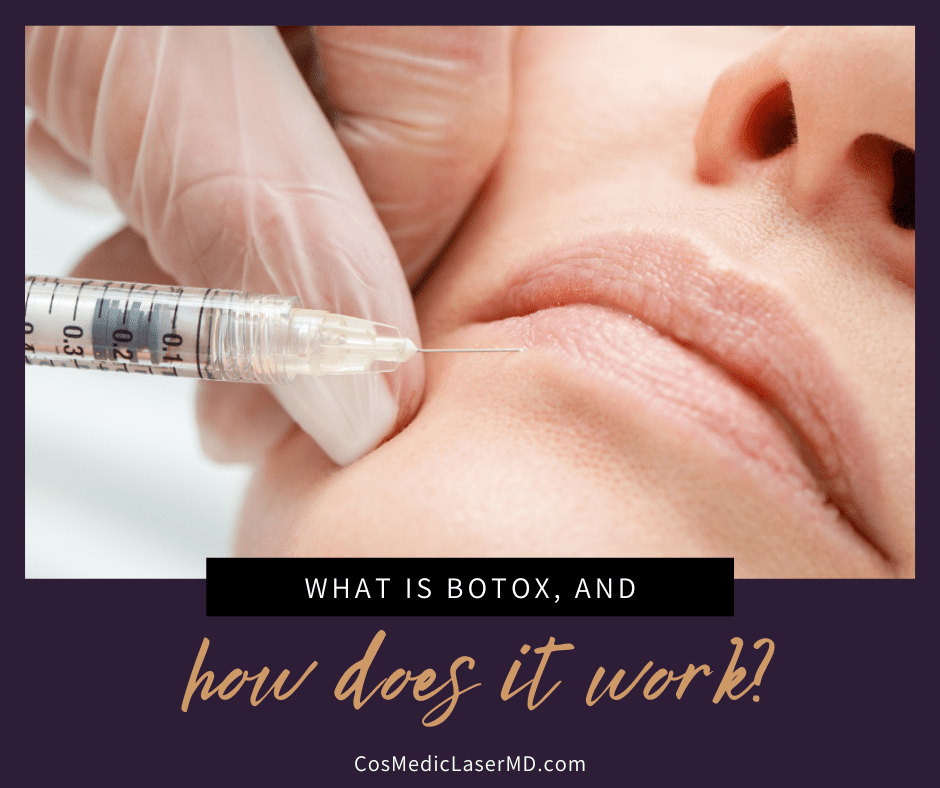
Botox is a neurotoxin produced by the bacterium Clostridium botulinum. It’s injected into muscles to prevent them from contracting, which can lead to wrinkles and other signs of aging. This guide explains how Botox really works and what you can use it for.
What is Botox?
Botox is a neurotoxin that temporarily relaxes facial muscles to reduce the appearance of wrinkles. It’s made from a bacteria called Clostridium botulinum, which is found in soil and dust. When used in small and appropriate doses, Botox can be a safe and effective way to reduce the appearance of wrinkles.
How Does Botox Work in Cosmetic Procedures?
Botox works by paralyzing the muscles that contract to create wrinkles. When these muscles are temporarily paralyzed, the skin appears smooth and wrinkle-free. The effects of Botox usually last for 3 to 6 months, at which point the treatment can be repeated.
Where Can a Doctor Inject Botox for Cosmetic Reasons?
Botox can be injected into many different areas of the face, including the forehead, around the eyes, and in the crow’s feet area. The exact injection site will depend on your individual needs and desired results.
Related: 5 signs you need a chemical peel
How Old Should You Be When You Get Botox?
There is no set age limit for getting Botox, but most doctors recommend that patients be at least 18 years old. You can get this treatment long before your wrinkles become extremely noticeable. Many people choose to get Botox treatments beginning in their 20s and beyond.
Why is Botox So Effective?
Botox is so effective because it temporarily paralyzes the muscles that contract to create wrinkles. By doing so, it relaxes the skin and gives it a smooth, wrinkle-free appearance.
Are There Risks to Using Botox?
As with any cosmetic procedure, there are some risks associated with Botox. These include bruising, swelling, and infection at the injection site. There is also a small risk that the toxin could spread to other areas of the body, causing complications. However, these risks are rare and can be minimized by choosing an experienced injector.
Related: Everything you need to know about treating acne scars
Does Botox Reverse Aging?
Botox cannot completely reverse the aging process, but it can temporarily minimize the appearance of wrinkles. Many people choose it over other options such as facial fillers or surgery. Botox treatments are far less invasive than surgical treatments are, which is one big reason that many people – particularly those who don’t have extreme wrinkles – choose them.
What Are the Most Common Side Effects After Getting Botox?
The most common side effects after getting Botox are bruising, swelling, and tenderness at the injection site. These side effects typically resolve on their own within a few days.
How to Care for Yourself After Receiving Botox Treatments
If you experience any side effects after getting Botox, you can take over-the-counter pain medications to help relieve any discomfort. You should also avoid rubbing or massaging the injection site; if you get Botox on your face, avoid resting that part of your face on your pillow for a day or two after the treatment. Be sure to follow your doctor’s instructions for care and activity after your treatment.
Related: How to reduce the appearance of fat without surgery
What Other Uses is Botox Approved For?
Botox can be used for more than just reducing wrinkles. It’s also been approved to treat conditions such as migraines, excessive sweating, and even urinary incontinence.
Botox is a popular cosmetic procedure because it is safe, effective, and relatively affordable. If you’re considering this treatment, be sure to consult with a qualified doctor to discuss your options and make sure it’s right for you.
Ready to Talk About Botox in Ann Arbor?
Our Ann Arbor med spa can help you get the look you want, from clear and youthful skin to fat reduction. Call or text us at 734-249-8722 or fill out the form below to get in touch.


